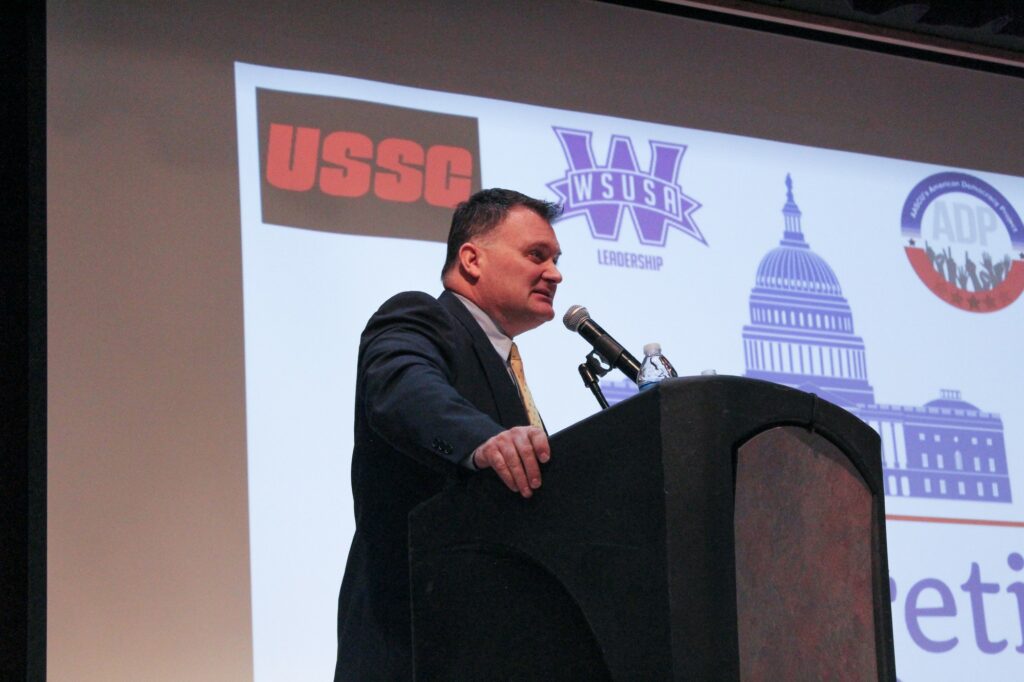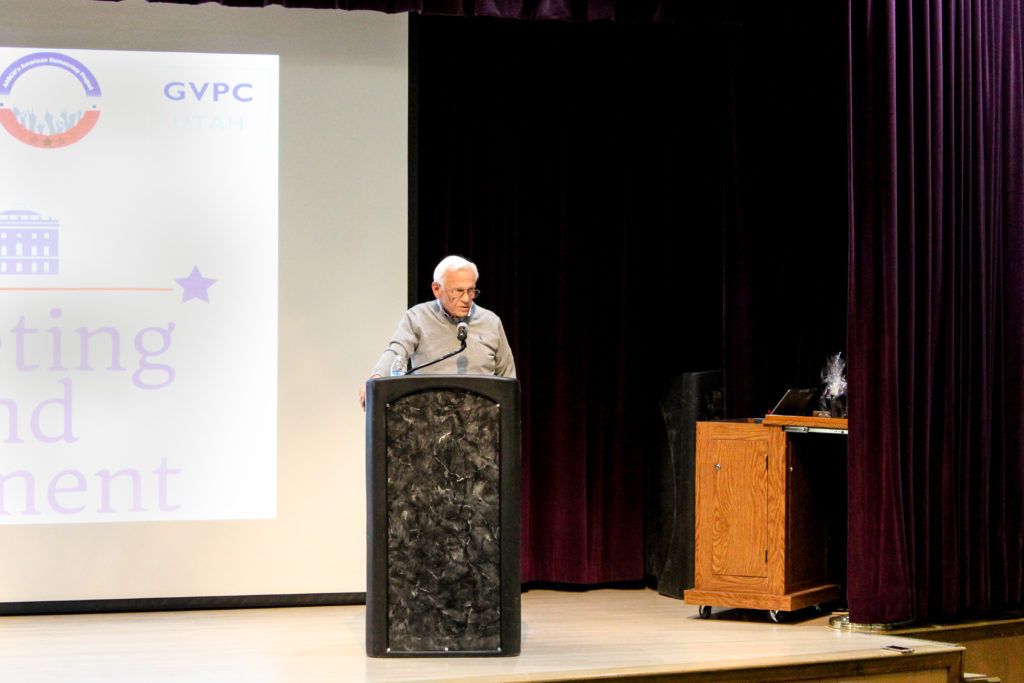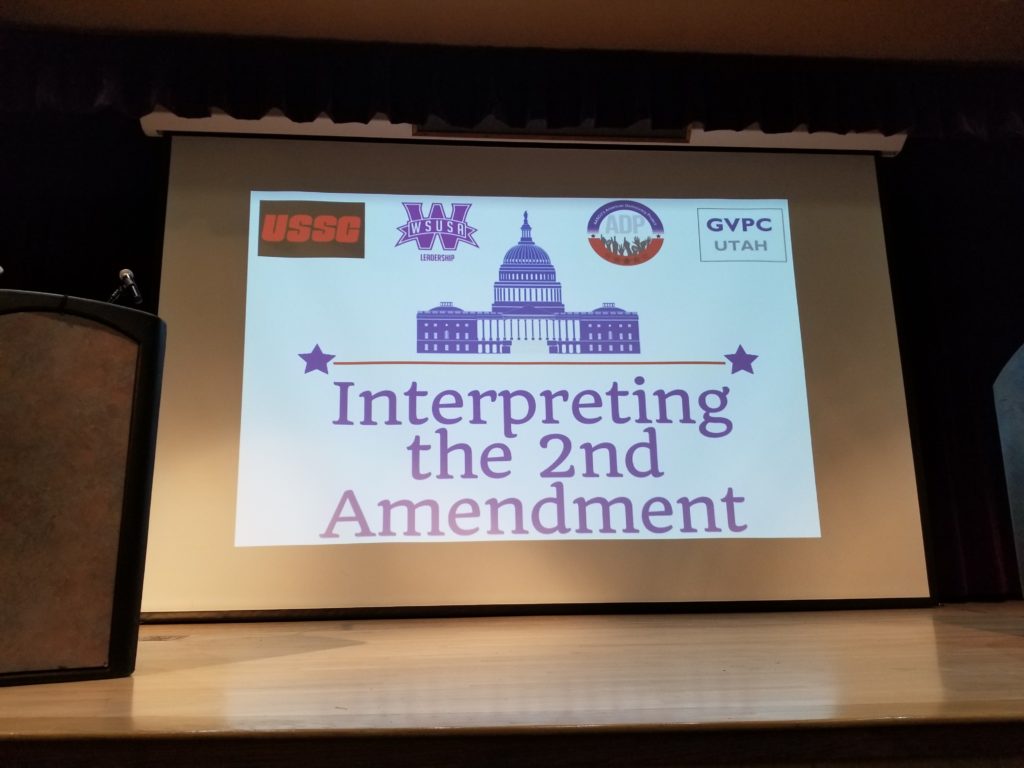
A discussion on interpreting the Second Amendment was held on Feb. 21 at Weber State University. Experts discussed both sides of the issue and answered questions from students.
Professor Leah Murray led the discussion in association with the Weber State University Student Association, Gun Violence Prevention Center of Utah, American Association of State Colleges and Universities American Democracy Project, Utah Shooting Sports Council and guest speakers.
Guest speaker Gary G. Sackett, who is of counsel for Jones Waldo Law Firm and leader for the Legal Ethics and Professional Responsibility Practice Group, fielded the first question from a student.
Sackett was asked to clarify his interpretation of the Second Amendment, on the regulation of which types of guns would be restricted from civilian ownership.
“What we think is that there is such a connection between the lethality of the existence of ‘assault weapons’ and the almost zero use for them,” Sackett said. “That they should be in fact prohibited just as they were for quite a few years.”

Chairman of the Utah Shooting Sports Council board and State of Utah Concealed Weapon Hearing/Licensure board Clark Aposhion believes there are many other factors to be considered beside the type of weapons being used.
Aposhian pointed to statistics that indicated during the Firearms Control Regulations Act of 1975, crime rates did not go down as a result of the law. He said the increase of gun ownership since then has not necessarily lead to an increase in gun-related crimes.
Aposhian argued it is not primarily the gun, nor the gun buyer, who is responsible for violent gun-related crime in the United States, but rather people who illegally purchase arms or gain access to a gun not properly secured against access from non-owners.
“We’re in a 45-year low in violent crime in the United States,” Aposhian said. “All the while, more guns.”
One example Aposhian provided was the National Instant Criminal Background Check System, a system for determining if a gun buyers’ name and birth year match those of someone who is not eligible to buy, had “without exception for the last eight years” beat its previous record for gun checks.
“We’re buying more guns and more guns,” Aposhian said. “Yet crime does not reflect this increase in gun purchasing.”
Another question students asked was to what extent the Second Amendment should be regulated to be considered satisfactory for either speaker. Aposhian pointed to former Associate Justice of The Supreme Court Antonin Scalia’s stance on the issue, believing that any of our rights are regulated by some extent and that the Second Amendment isn’t any different. These restrictions may vary from state to state, and should be the ultimate decision of the states to decide for themselves what is best for its own people.
“As far as regulation goes, it’s a ponderous amendment,” Aposhian said. “I can’t get into the heads of the founding fathers, but I think that they understood that it was obvious that there would be state regulation.”
Sackett disagrees by stating the founding fathers left the Second Amendment vague and open to reinterpretation as the circumstances changed with the times, believing guns nowadays are much more violent than they were during the inception of the government.
“What’s the point in having these weapons of mass destruction?” Sackett said. “What reason does a civilized society have for something that can fire rapidly? There is no civilized reason for having these weapons, except to be in the hands of law enforcement and the military.”




















